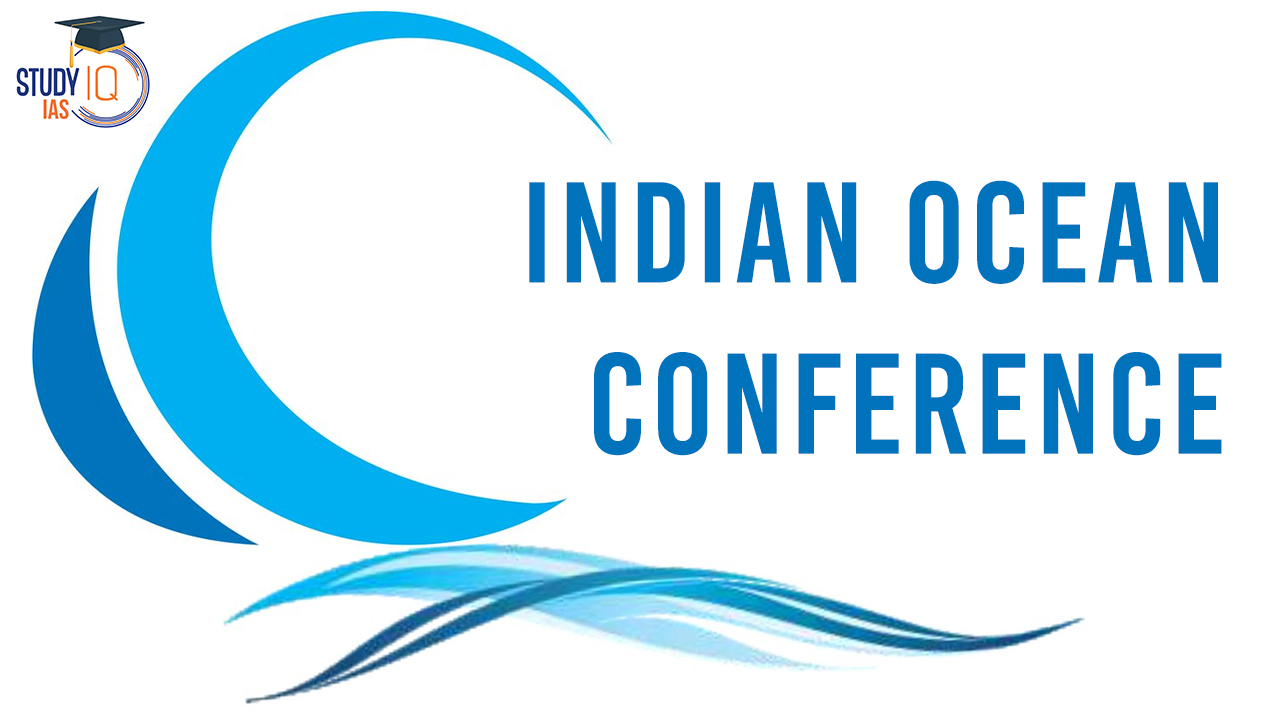Table of Contents
Context: Recently the 8th Indian Ocean Conference (IOC), was held in Muscat, Oman. Its theme was “Voyage to New Horizons of Maritime Partnership.
About Indian Ocean Conference (IOC)
- Conference Focus: The Indian Ocean Conference (IOC) annually emphasises the Indian Ocean region’s geopolitical, economic, and strategic significance.
- Diverse Participation: It gathers policymakers, academics, business executives, and civil society members to deliberate on security, commerce, and collaboration matters in the Indian Ocean area.
- Inaugural Session: IOC was started by the India Foundation in 2016. The first conference was held in Singapore. It serves as a platform for nations within and beyond the Indian Ocean region to discuss and collaborate on regional affairs
- Organisational Collaboration: The India Foundation, in conjunction with regional partners, organises the conference
Significance of the Indian Ocean
- Trade Hub: The Indian Ocean is a critical maritime trade route, linking Asia, Africa, Europe, and the Middle East, and handling about 75% of global maritime trade.
- Energy Production: This region accounts for 40% of the world’s offshore oil production and is crucial for LNG supplies, with India being a major importer.
- Vital Sea Lanes: The Indian Ocean’s three key SLOCs are essential for global trade and energy security, facilitating the movement of goods and energy resources.
- Fishing Industry: With nearly 15% of the global fish catch coming from this region, the Indian Ocean’s fishing industry is vital for food supply and economic stability in related countries.
- Oil Transit Route: Half of the world’s daily oil consumption is transported through the Indian Ocean, highlighting its importance in global energy distribution.
- Coastal and Economic Security: India’s extensive coastline and dependence on the fishing industry make regional security crucial for its economic development.
- Strategic Dynamics: The region is central to global strategic shifts, including the rise of China and India, US interventions, Indo-Pak tensions, terrorism, and piracy.
- Choke Points: Strategic choke points like the Straits of Hormuz, Malacca, and Bab el Mandeb are crucial for international trade and energy flow, drawing naval presence from various countries including the USA and France.
- China’s Influence: China’s focus on the Indian Ocean, through initiatives like the Silk Road project and cooperation with coastal nations, underscores the region’s growing importance.
- Global Power Policies: The US ‘Pivot to Asia’ and China’s ‘OBOR & String of Pearls’ strategies enhance the Indian Ocean’s strategic significance, with Chinese naval activities in Hambantota signalling regional protection concerns


 International Standards of Accounting an...
International Standards of Accounting an...
 SAMARTH Udyog Bharat 4.0: Transforming I...
SAMARTH Udyog Bharat 4.0: Transforming I...
 BHIM 3.0 Launched by NPCI: Key Features,...
BHIM 3.0 Launched by NPCI: Key Features,...





















